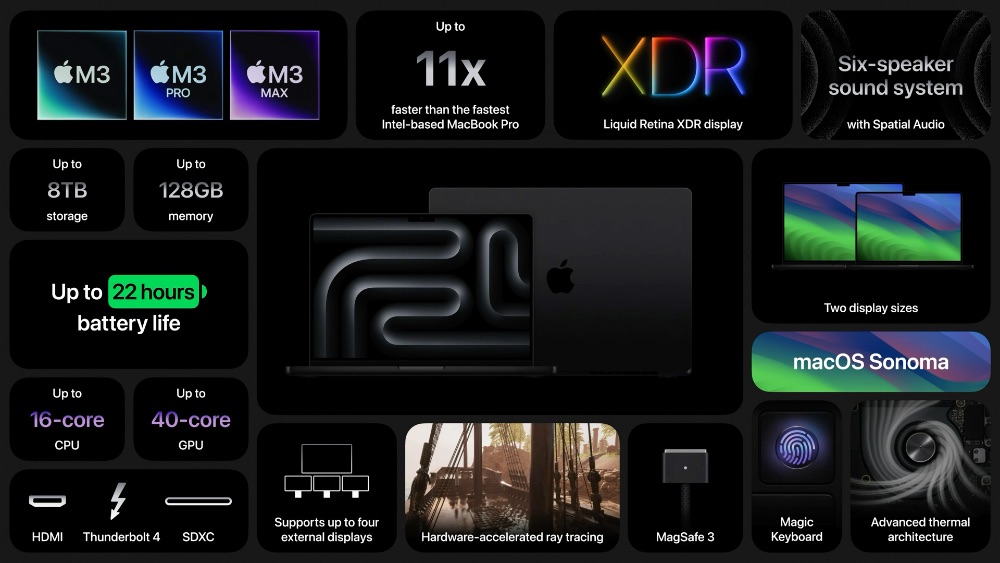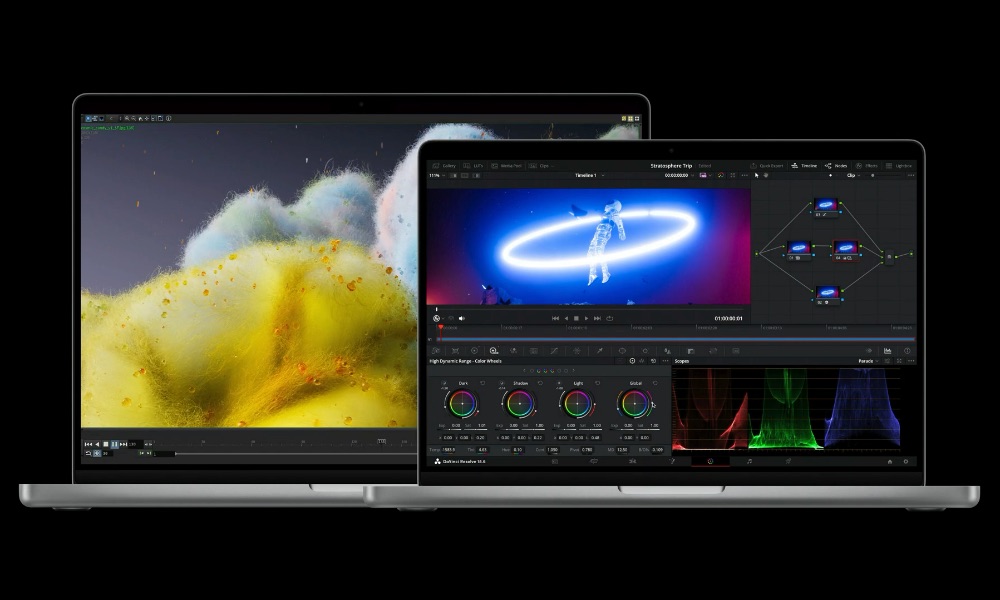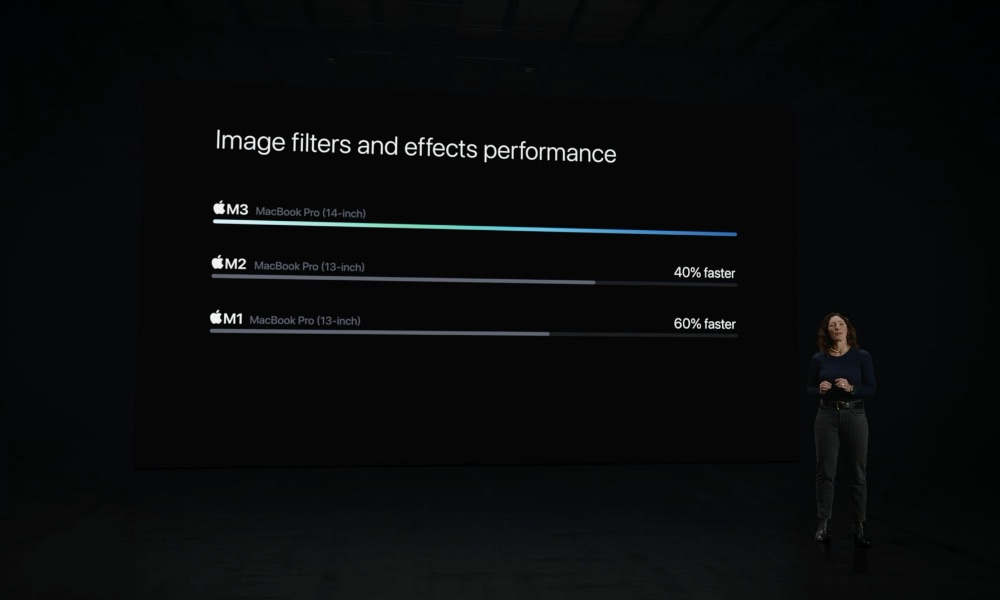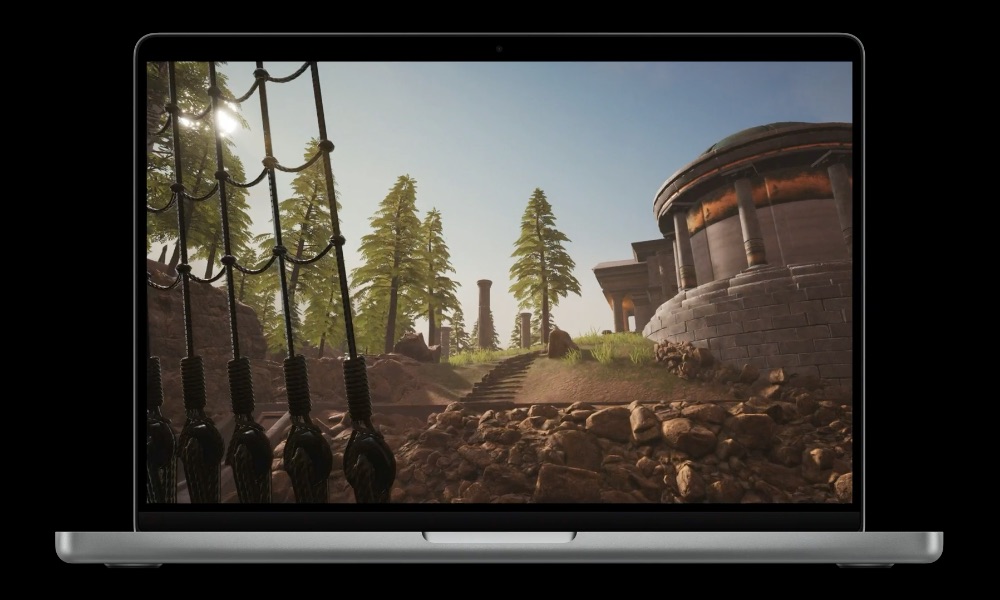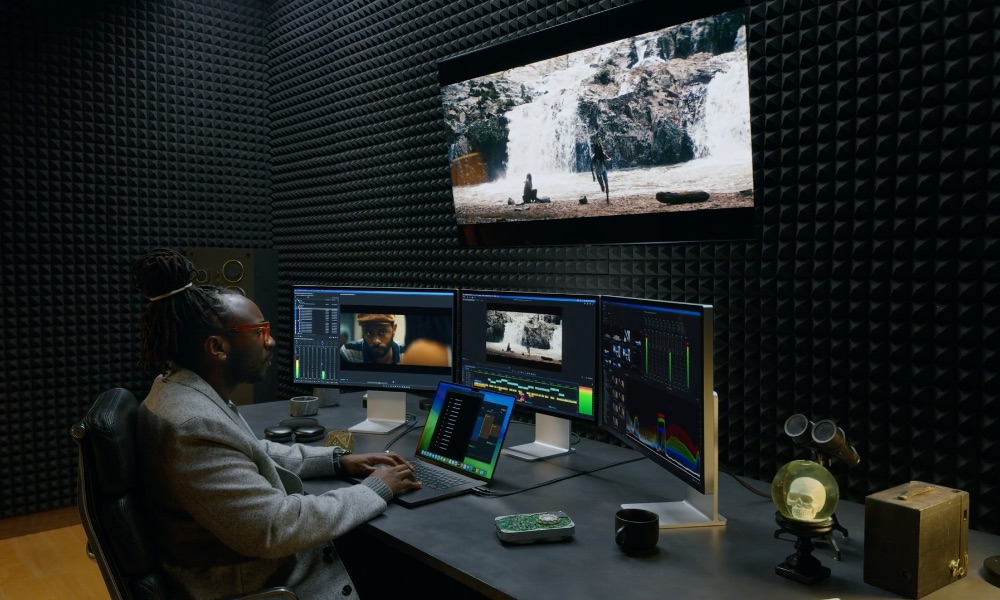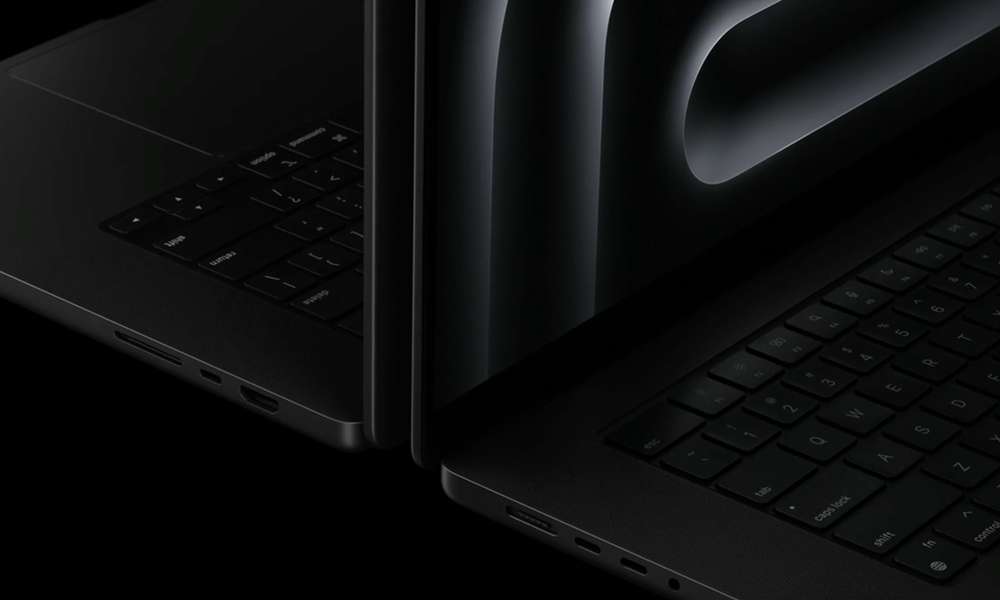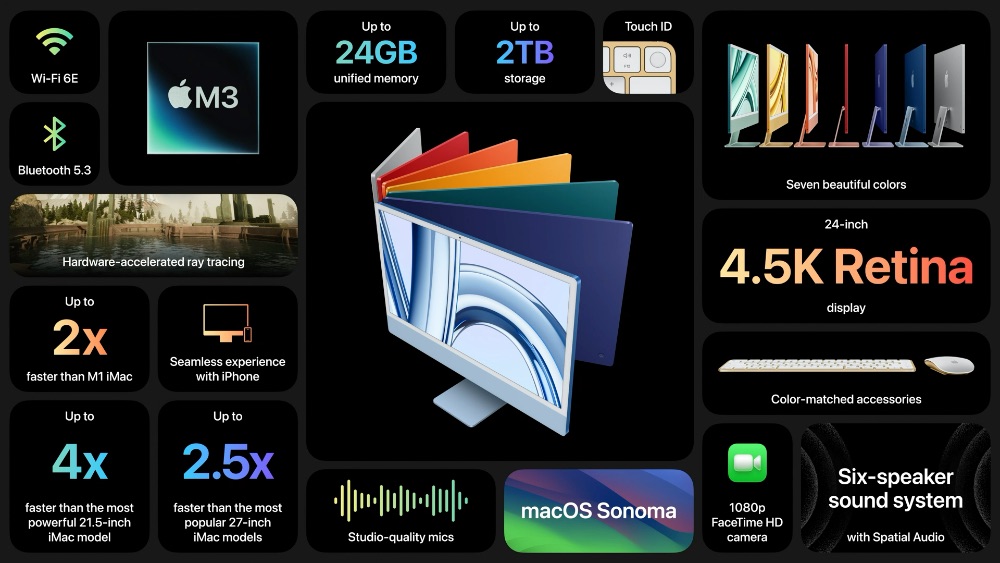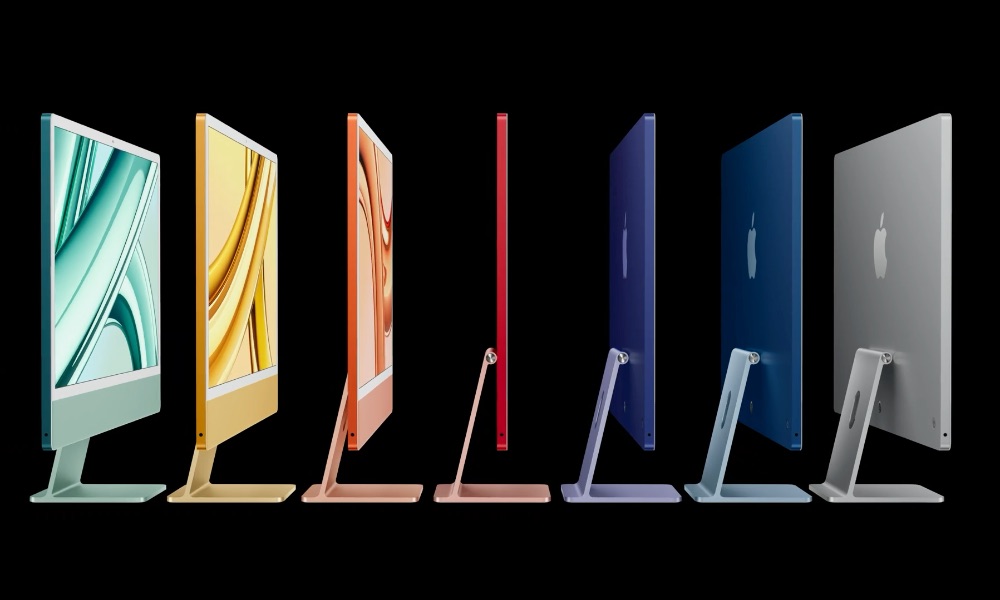Apple Introduces New M3-Powered MacBook Pro and iMac Lineup
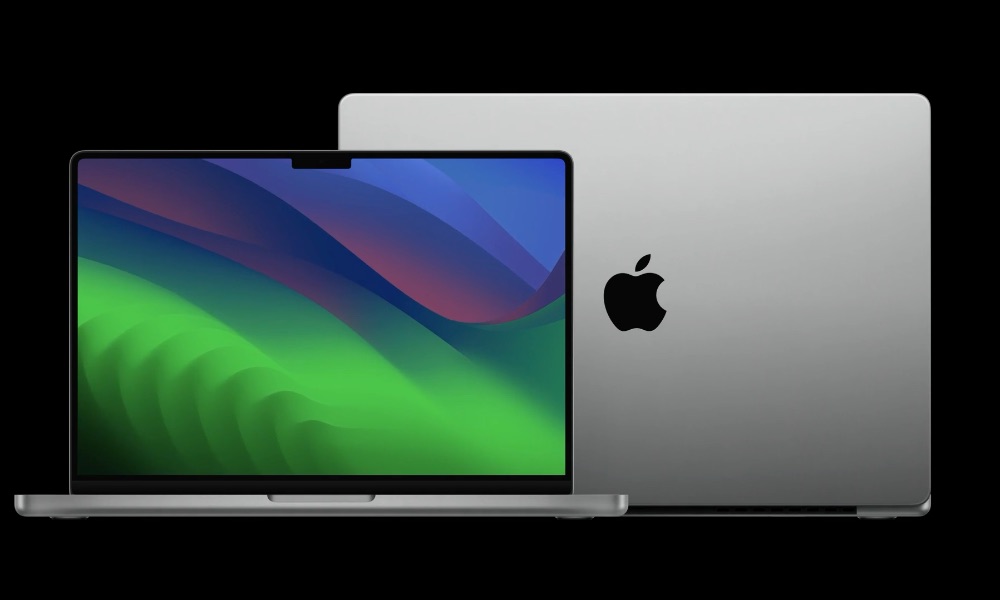
Toggle Dark Mode
Last night’s Scary fast event heralded the arrival of the full lineup of Apple’s next-generation M3 chips all at once, promising groundbreaking new graphics improvements to match what Apple did with the iPhone 15 Pro’s A17 Pro chip last month.
Of course, these new chips also need some new Macs to go into, and Apple didn’t disappoint in that area, although we didn’t get too many big surprises here either.
Other than the M3 chips themselves, the star of the show were Apple’s newest 14-inch and 16-inch MacBook Pro models. However, if you were expecting a new design for these, you’re going to come away disappointed. Ditto for the 24-inch iMac, which finally got an update to faster Apple silicon but little else.
It was an interesting twist of the old and the new. The 24-inch iMac hasn’t been updated in well over two years, remaining in an M1 configuration since it was first introduced in the spring of 2021, only six months after Apple ushered in the M1 with the MacBook Air, 13-inch MacBook Pro, and Mac mini.
On the other hand, Apple refreshed its 14-inch and 16-inch MacBooks Pro only ten months ago, introducing M2 Pro and M2 Max configurations in January to follow up on the original fall 2021 M1 Pro/Max launches. However, the company clearly sees no point in waiting to put its best and most powerful silicon in what is undoubtedly its most popular pro-grade Mac lineup.
However, it also didn’t come as much of a surprise that little has changed about the new Macs other than the new M3 chips they now pack in. That’s not a bad thing, as the Apple silicon is where all the power lies.
The New MacBooks Pro
Apple’s Senior VP of Hardware Engineering, John Ternus, came on to introduce the new MacBook Pro lineup as “a monster upgrade for anyone still on an Intel-based MacBook Pro” before handing things off to Kate Bergeron, VP of Hardware Engineering, to tell us about the new MacBooks.
You had to know it was coming, but Bergeron opened with a quip that “the new MacBook Pro is scary fast,” thanks, of course, to the new Apple silicon inside and anybody who was paying attention during the first half of the short event should have already known what was coming.
While it was a given that the new MacBook Pro models would feature versions with M3 Pro and M3 Max chips, Bergeron threw us a small surprise curveball when she revealed that the 14-inch MacBook Pro will now start with the M3 chip in its baseline configuration.
It’s a move that makes a lot of sense and will help Apple’s MacBook Pro lineup to be much more consistent. While Bergeron didn’t come out and say it, the underlying message was unmistakable: the 13-inch MacBook Pro is dead.
That became even more clear when Bergeron began showing performance comparisons of the M3 14-inch MacBook Pro to the M2 13-inch MacBook Pro. However, in case there was still any doubt, the 13-inch model with the legacy design and Touch Bar was nowhere to be found when the Apple Store came back online after the event.
The entry-level 14-inch MacBook Pro will now start at $1,599. That’s more expensive than the 13-inch model, but you’ll also be getting all the other benefits of the more advanced model that previously required splurging on an M2 Pro chip, including the larger, better, and brighter Liquid Retina XDR display, better speaker system, and mic array and 1080p FaceTime camera.
Other than that new base M3 option, the other 14-inch and 16-inch MacBook Pro models came as no surprise. The design remains the same as before, and the only new capabilities are those powered by the M3 Pro and M3 Max chips.
The M3 Pro version now supports up to 36GB of unified memory and can still drive two displays, but the performance boost it offers over the M2 Pro model isn’t significant enough to make it a worthwhile upgrade.
Of course, the M2 Pro MacBook Pro only came out earlier this year, so it’s unlikely anybody who bought one will be looking to update to the M3 Pro model. There’s a reason Apple kept making the performance comparisons of its new M3 chips to their M1 counterparts.
However, the M3 Max MacBook Pro does provide a more significant boost over its predecessor. Bergeron described it as “an absolute beast” designed for “users with extreme workflows like AI developers, 3D artists, and video professionals.”
In addition to now featuring 16 CPU cores — 12 of which are high-performance cores — it can now be configured with up to 128GB of unified memory, which is a first for an Apple silicon MacBook. Previously, you could only do that with a Mac Studio or Mac Pro with their M1/M2 Ultra chips.
As with the prior models, the M3 Pro MacBook Pro can drive up to two external high-resolution displays, while the M3 Max version can support up to four. While the MacBook Pro Display hasn’t changed much from the prior model, it does reach 600 nits of brightness for SDR content. That’s 20% brighter and matches the Studio Display to provide a more consistent experience.
While the general design of the MacBook Pro is unchanged, Apple did surprise us with a new color finish: Space Black. It’s an elegant and stunning dark aluminum finish that Apple says uses unique chemistry to form an anodization seal to significantly reduce fingerprints.
The new MacBook Pro models can be ordered now, with the M3 and M3 Pro configurations available next week and the M3 Max coming later in November.
During the event, John Ternus highlighted that the new 14-inch MacBook Pro now starts at $1,599 rather than $1,999, but that’s a bit misleading. The prior 14-inch model only came with an M2 Pro in its minimum configuration, and $1,999 is still the starting price for the new M3 Pro version.
What you’ll get for $1,599 is an M3 chip, succeeding the M2 that was previously limited to the 13-inch MacBook Pro. That smaller MacBook Pro started at $1,299, although it also lacked the larger and significantly better Liquid Retina XDR display, 1080p FaceTime camera, and other improvements like more built-in ports and a better speaker and mic array. That’s not a bad deal considering the gap that previously existed between the 13-inch and 14-inch MacBooks Pro.
As for the 16-inch MacBook Pro, that still starts at $2,499 since, of course, there’s no base M3 configuration available there. You’ll be starting with an M3 Pro, just like the M2 Pro before it.
The 24-inch iMac
While the new MacBooks Pro have a couple of interesting changes, the new 24-inch iMac that Apple unveiled was far less exciting. It formed almost a footnote to Apple’s event, with an introduction where John Ternus spent more time recapping all the great things the 24-inch iMac can already do than talking much about what’s new.
That’s because the only thing that’s new is that it now comes with an M3 chip.
This will give the iMac a giant leap in performance — twice as fast as the M1 iMac — in the same incredibly thin design. However, Apple isn’t even changing up the colors. You’ll have a hard time telling an M3 iMac apart from the 2021 M1 model.
Not that there’s anything wrong with that. It’s still a great design and is already available in seven fun and vibrant colors. There’s probably no need to make a change just for the sake of change.
Besides the M3 chip, you get the same 500-nit 4.5K Retina display, 1080p FaceTime camera, six-speaker sound system with Spatial Audio, and studio-quality mic array. The Magic Keyboard with Touch ID is also still supported as an optional add-on.
The lineup remains the same, with the two-port model featuring a binned M3 with an 8-core GPU and a more limited selection of only four colors. You’ll have to step up to the four-port $1,499 model if you want it in yellow, orange, or purple, although you’ll also get the full 10 GPU cores in the M3 chip for that price, and the Magic Keyboard with Touch ID thrown in.
Both 24-inch iMac models are available for order today and should be in stores next week.

